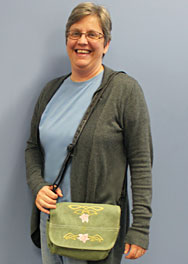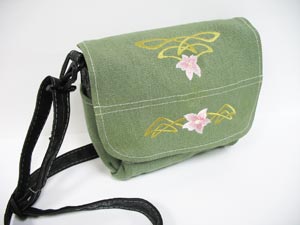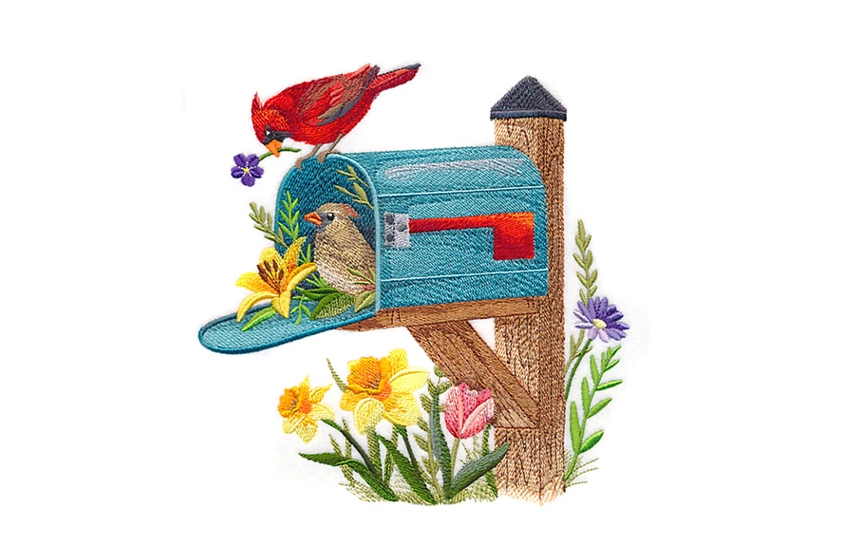Designs Used
A new store recently opened in my neighborhood that only carries products and items that are eco-friendly. Their price tags are even made from recycled cereal boxes! Knowing that 'going green' is a widely discussed topic these days, it got me thinking about fabrics that are environmentally friendly, and how they can help reduce our carbon footprints. One of these fabrics is hemp.
Hemp is the most durable of all of the natural fiber fabrics. Its strength and comfort makes it a great choice for items of all seasons, for both the indoors and outdoors.

Hemp usage dates back to the Stone Age - over 10,000 years ago. Artifacts found in Taiwan and China show that it was used in pottery, clothing, ropes, and shoes. In the 1400's, hemp was more widely used than linen, and by the 1700's, it was as common as cotton is today. The reason for this, beyond its durability, was the ease of growth.
Since hemp flourishes without the assistance of herbicides, fungicides, or pesticides, it is an easy crop to grow. It requires little water and has a deep root system that helps to prevent soil erosion, removes toxins, and aerates the soil to the benefit of future crops. These factors play a large role in the conservation of the environment. Better yet, every part of the hemp plant is processed - there is no waste!
Not only is hemp eco-friendly, but it is also people-friendly too. It is healthy to wear against the skin because it is hypo-allergenic, breathes well, and provides unparalleled UV protection. It is very resistant to degradation from mold, bacteria, salt water, sunlight, abrasion, and chemicals, while also being fully biodegradable. Hemp wicks perspiration away from the skin, and insulates against the cold in the winter and remains cool and comfortable in the summer. With all of these qualities, hemp diapers are becoming increasingly popular for babies. And, even with repeated machine washings, hemp softens naturally over time and retains its natural strength and resilience.
Recent technology advancements have made it possible to soften hemp fibers to an increasingly wearable texture, so the range of hemp weights and textures are vast. When combined with cotton, linen, or silk, hemp remains strong, yet soft. Heavier weight hemp fabrics are more coarse and resemble canvas. Garments such as shirts, skirts, and dresses can be made from lightweight, linen-type hemp fabric, while the heavier weight versions work well for jackets, totes, and home furnishings.
Since there are variations in the techniques used for embroidering on the different weights, I have included examples of light and heavyweight hemp stitching below. For any weight, if starting from scratch and not using pre-shrunk hemp fabric, always wash it before beginning your project. Also keep in mind that the seams of 100% hemp tend to ravel easily, so surging or finishing the seams will be necessary.

When stitching on heavy weight hemp, such as this messenger bag, use a 75/11 sharp sewing needle. The fine point will help to perforate the tougher-than- usual fabric.
Your options for choosing an embroidery design are endless as a design of any complexity will work with the sturdiness of this fabric. I did not have any issues with draping or puckering.
I thought the Art Nouveau designs would look great for this project because of their pretty colors and interesting detail.
I chose cutaway stabilizer, which I adhered to the fabric with a light coat of spray adhesive. It is possible to use tear-away stabilizer as well, but the cutaway will ensure the stitches of designs with small detail will be nice and crisp.

Soft, lightweight hemp fabric, when used for tablecloths and napkins, will outlast cotton linens. But when embroidering on linen-style hemp, the techniques differ slightly from the heavyweight instructions.
I continued to use the 75/11 sharp sewing needle, as it was already in my machine. But an embroidery needle can also be used, as the fabric has a looser weave than the heavyweight hemp.
Choose light to medium fill designs for this kind of hemp fabric. A more complex design will negatively affect the draping of the material.
For this hemp cloth napkin, I stitched out the Simple Treasures Tulip Swirl design which has plenty of open space and drapes beautifully.
Generally I use cutaway stabilizers with lighter fabrics, and tear-away stabilizers with heavier fabrics. I was expecting to use a cutaway stabilizer with the lighter hemp, but I noticed that there really isn't any stretch to the fabric. I decided to use tear-away stabilizer based on two facts: one, hemp doesn't stretch, and two, the design I used was simple, and light. The results were great!
If you are working with a lightweight hemp, and start to see the stitches of a design out of place, then switch to a cutaway stabilizer. But generally, a tear-away will be fine with this type of fabric.
Like linen, hemp will soften the more it is laundered. Dry cleaning or machine washing are both fine options. If using your washing machine, wash with cold water and do not use chlorine bleaches. Since hemp is not always colorfast, make sure to separate light and dark items or use a dye catcher sheet. Allow the garments to air dry. Drying them in the dryer can cause wrinkles and shrinkage. Hanging the garments will help eliminate wrinkles, although touch up ironing is also an option.


